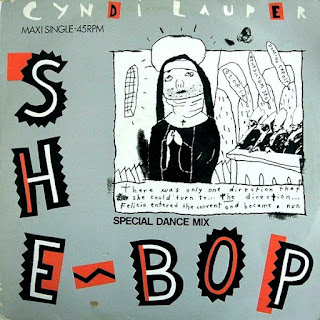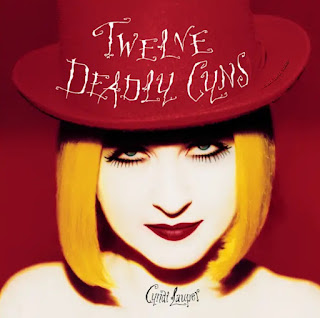THE BEATLES - SGT. PEPPER’S LONELY HEARTS CLUB BAND / WITH A LITTLE HELP FROM MY FRIENDS
Publicació: 26 de maig de 1967
SGT. PEPPER’S LONELY HEARTS CLUB BAND
"Sgt. Pepper's Lonely Hearts Club Band" és una cançó escrita per Paul McCartney, acreditada a Lennon-McCartney, i llançada a l'àlbum dels Beatles el 1967. McCartney va escriure i interpretar la veu solista de la pista, i després de la seva gravació, va concebre la idea de presentar tot l'àlbum com si Sgt. Pepper fos una banda real. La cançó serveix com a títol de l'àlbum, considerat un àlbum "conceptual" amb cançons connectades de manera coherent.
El concepte de "Sgt. Pepper's Lonely Hearts Club Band" i la idea de l'alter ego van sorgir a Paul McCartney durant un vol de Kènia a Anglaterra al novembre de 1966. La inspiració va sorgir d'una conversa sobre les lletres "S" i "P" a les safates de menjar, que va portar al concepte d'una banda fictícia. El gerent de la gira del grup, Neil Aspinall, i el tècnic Mal Evans, també van contribuir a la idea. Els Beatles la van gravar a l'estudi 2 d'Abbey Road, amb George Martin produint i Geoff Emerick com a enginyer.
L'artista Peter Blake va dissenyar la portada de l'àlbum "Sgt. Pepper's Lonely Hearts Club Band" per representar un concert on la banda fictícia dels Beatles havia acabat de tocar. Tots els individus vius representats a la portada van donar el seu consentiment, incloent-hi Mae West, que inicialment es va negar, però després va acceptar. Entre els personatges hi ha Laurel & Hardy, Abbott & Costello, Marilyn Monroe, Shirley Temple, Bob Dylan, Marlon Brando, Tyrone Power, Tony Curtis, Marlene Dietrich, H.G. Wells, Oscar Wilde, Lewis Carroll, Dylan Thomas, Karl Marx, Albert Einstein, Sigmund Freud, entre d'altres. Tot i que John Lennon inicialment va proposar incloure Jesús, Gandhi i Hitler, van decidir no fer-ho. Els Rolling Stones estan representats per una nina que porta una samarreta amb un missatge de benvinguda a la banda.
La mà sobre Paul McCartney no és d'Hitler, sinó que pertany al còmic Issy Bonn, desmentint rumors de símbols sinistres. La diferència de percepció de l'alçada de McCartney i altres elements van alimentar rumors sobre la seva suposada mort.
La elaborada producció de l'àlbum va trigar 129 dies i unes 700 hores a completar-se, una diferència significativa si oq comparem amb la gravació relativament ràpida del seu primer àlbum, "Please Please Me", que es va fer en menys de 10 hores. L'àlbum també va ser el primer a incloure les lletres impreses a la coberta, i el seu títol parodiava les bandes americanes que triaven noms llargs per als seus grups.
"Sgt. Pepper's Lonely Hearts Club Band" apareix dues vegades a l'àlbum: com a primera pista, transicionant cap a "With a Little Help from My Friends", i com a "Sgt. Pepper's Lonely Hearts Club Band (Reprise)", la penúltima pista que precedeix a "A Day in the Life". Jimi Hendrix va impressionar a Paul McCartney i George Harrison obrint un concert amb la cançó només tres dies després del llançament de l'àlbum.
WITH A LITTLE HELP FROM MY FRIENDS
"With a Little Help from My Friends" és una cançó dels Beatles del seu àlbum de 1967, Sgt. Pepper's Lonely Hearts Club Band. Va ser una de les últimes cançons escrites en col·laboració per John Lennon i Paul McCartney. L'àlbum va ser concebut com si el sargent Pepper fos una banda real, i s'obre amb la pista titular abans de fluir cap a "With a Little Help From My Friends". Ringo Starr, el bateria dels Beatles, va assumir la veu principal, presentat com "Billy Shears", alineant-se amb el concepte de banda fictícia de l'àlbum.
Els Beatles van completar la gravació de "With a Little Help from My Friends" la nit que van fer la portada de l'àlbum. Les sessions van començar el 29 de març de 1967, amb 10 preses. Després d'una sessió nocturna que va acabar a les 5:45 del matí, Ringo Starr, inicialment reticent a fer de cantant principal, va ser persuadit pels altres Beatles per fer-ho. El dia següent, es van afegir elements addicionals com els cors, el baix i més guitarra elèctrica, mantenint el tema conceptual de la banda fictícia introduïda a l'àlbum.
"With a Little Help from My Friends" va portar a especulacions sobre referències a les drogues, tot i que John Lennon ho va negar. El vicepresident dels EUA Spiro Agnew dubtava de la negació de Lennon, suggerint que era un homenatge a la influència de les drogues il·legals. La lletra original, "Què faries si cantés fora de to? T'atreviries a llençar tomàquets a sobre meu?", va preocupar Ringo, temorós dels tomàquets si es feia en directe.
Paul McCartney i Ringo Starr es van reunir per interpretar "With a Little Help from My Friends" per primera vegada des del 1967 al Concert de Beneficència de la David Lynch Foundation el 4 d'abril de 2009, al Radio City Music Hall de Nova York. El duo també va compartir l'escenari per una interpretació de la cançó a "The Night That Changed America: A Grammy Salute to The Beatles" el 27 de gener de 2014, commemorant els 50 anys des del debut del grup al The Ed Sullivan Show.
Aquesta cançó va tenir èxit més enllà de la versió dels Beatles. La gravació de Joe Cocker el 1968 es va convertir en un himne de l'era Woodstock i va encapçalar la llista de singles del Regne Unit. Wet Wet Wet també va aconseguir un núm. 1 amb una nova versió el 1988, i Sam and Mark van repetir l'èxit el 2004.
THE BEATLES - SGT. PEPPER’S LONELY HEARTS CLUB BAND / WITH A LITTLE HELP FROM MY FRIENDS
Released: May 26, 1967
SGT. PEPPER’S LONELY HEARTS CLUB BAND
"Sgt. Pepper's Lonely Hearts Club Band" is a song written by Paul McCartney, credited to Lennon–McCartney, and released in The Beatles’ 1967 album. McCartney wrote and sang lead on the track, and after its recording, he conceived the idea of presenting the entire album as if Sgt. Pepper was a real band. The song serves as the title track of the LP, which is considered a "concept" album with seamlessly connected songs.
The concept for "Sgt. Pepper's Lonely Hearts Club Band" and the alter-ego idea came to Paul McCartney during a flight from Kenya to England in November 1966. The inspiration sparked from a conversation about the letters "S" and "P" on meal trays, leading to the concept of a fictional band. The group's road manager, Neil Aspinall, and roadie Mal Evans also contributed to the idea. The Beatles recorded it in Abbey Road's studio 2, with George Martin producing and Geoff Emerick engineering.
Artist Peter Blake designed the album cover of "Sgt. Pepper's Lonely Hearts Club Band" to depict a concert where The Beatles' fictional band had just performed. All living individuals portrayed on the cover gave their permission, including those like Mae West who initially refused but later agreed. Characters featured include Laurel & Hardy, Abbott & Costello, Marilyn Monroe, Shirley Temple, Bob Dylan, Marlon Brando, Tyrone Power, Tony Curtis, Marlene Dietrich, H.G. Wells, Oscar Wilde, Lewis Carroll, Dylan Thomas, Karl Marx, Albert Einstein, Sigmund Freud among others. Despite John Lennon's initial idea to include Jesus, Gandhi, and Hitler, they decided against it. The Rolling Stones are represented by a doll wearing a shirt emblazoned with a message of welcome to the band.
The hand above Paul McCartney is not Hitler's but belongs to comic Issy Bonn, dispelling rumors of ominous symbols. McCartney's perceived height difference and other elements fueled rumors of his death.
The album's elaborate production took 129 days and about 700 hours to complete, a significant departure from the relatively quick recording of their first album, "Please Please Me", which was done in less than 10 hours. The album also was the first to include printed lyrics on the cover, and its title parodied American bands choosing lengthy names for their groups.
"Sgt. Pepper's Lonely Hearts Club Band" appears twice on the album: as the opening track, segueing into "With a Little Help from My Friends," and as "Sgt. Pepper's Lonely Hearts Club Band (Reprise)", the penultimate track segueing into "A Day in the Life". Jimi Hendrix impressed Paul McCartney and George Harrison by opening a concert with the song just three days after the album's release.
WITH A LITTLE HELP FROM MY FRIENDS
"With a Little Help from My Friends" is a song by the Beatles from their 1967 album Sgt. Pepper's Lonely Hearts Club Band. It marked one of the last songs written collaboratively by John Lennon and Paul McCartney. The album was conceptualized as if Sgt. Pepper were a real band, and it opens with the title track before flowing into "With a Little Help From My Friends". Ringo Starr, the Beatles' drummer, took the lead vocal role, introduced as "Billy Shears," aligning with the album's fictional band concept.
The Beatles completed recording "With a Little Help from My Friends" on the night they shot the cover for the Sgt. Pepper album. The sessions started on March 29, 1967, with 10 takes. After a late-night session that ended at 5:45 in the morning, Ringo Starr, initially reluctant to record his lead vocal, was persuaded by the other Beatles to do so. The next day, additional elements like tambourine, backing vocals, bass, and more electric guitar were added, maintaining the conceptual theme of the fictional band introduced in the album.
"With a Little Help from My Friends" led to speculation about drug references, even though John Lennon denied it. US Vice President Spiro Agnew doubted Lennon's denial, suggesting it was a tribute to illegal drugs' influence. The original lyric, "What would you do if I sang out of tune? Would you stand up and throw tomatoes at me?" worried Ringo, fearing potential tomato-throwing if performed live.
Paul McCartney and Ringo Starr reunited to perform "With a Little Help from My Friends" for the first time since 1967 at the David Lynch Foundation Benefit Concert on April 4, 2009, at Radio City Music Hall, New York. The duo also shared the stage for a rendition of the song on "The Night That Changed America: A Grammy Salute to The Beatles" on January 27, 2014, commemorating 50 years since the band's debut on The Ed Sullivan Show.
This song saw success beyond the Beatles' rendition. Joe Cocker's recording in 1968 became an anthem for the Woodstock era and topped the UK Singles Chart. Wet Wet Wet also achieved a #1 hit with a cover in 1988, and Sam and Mark repeated the feat in 2004.



































